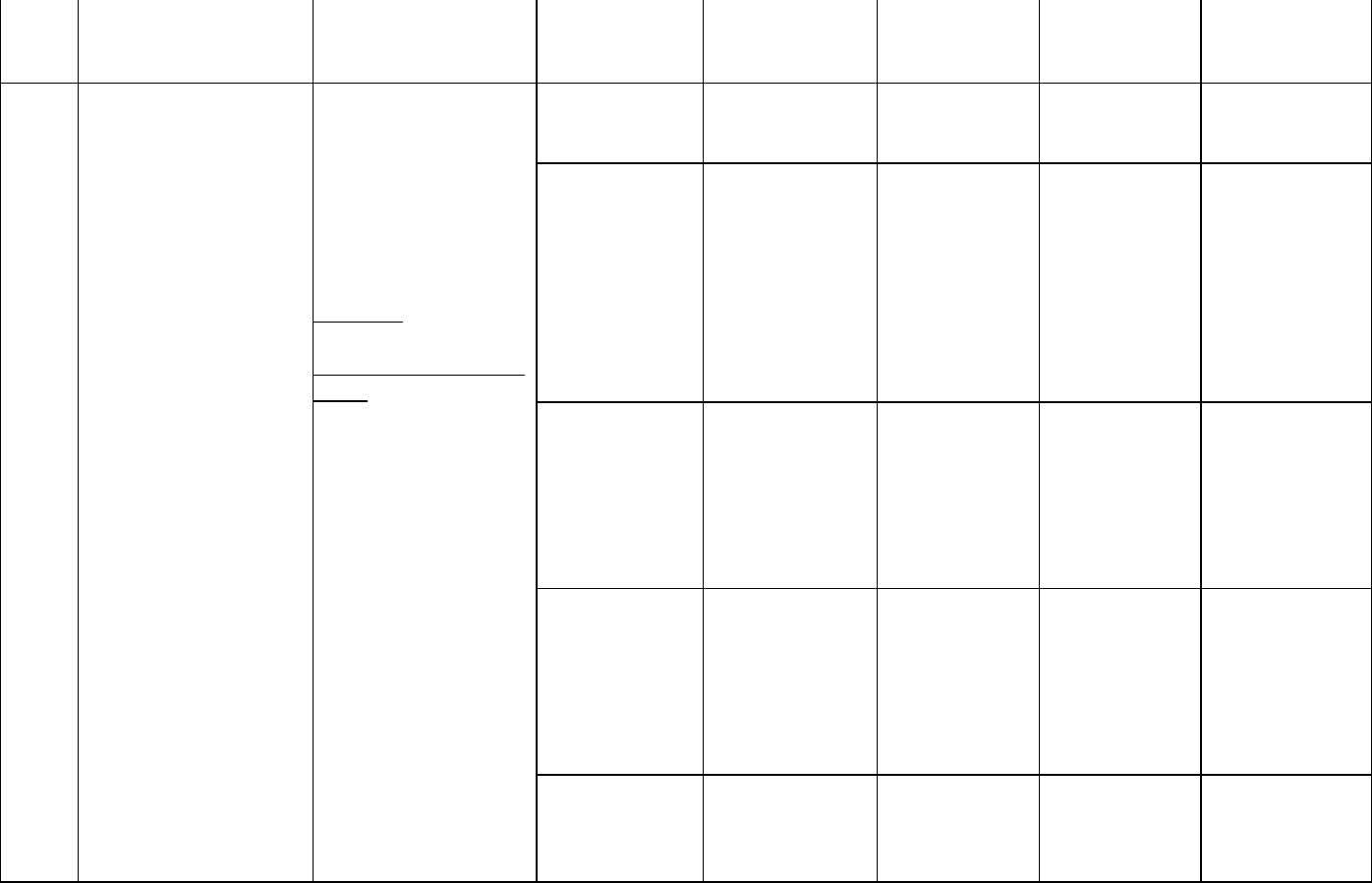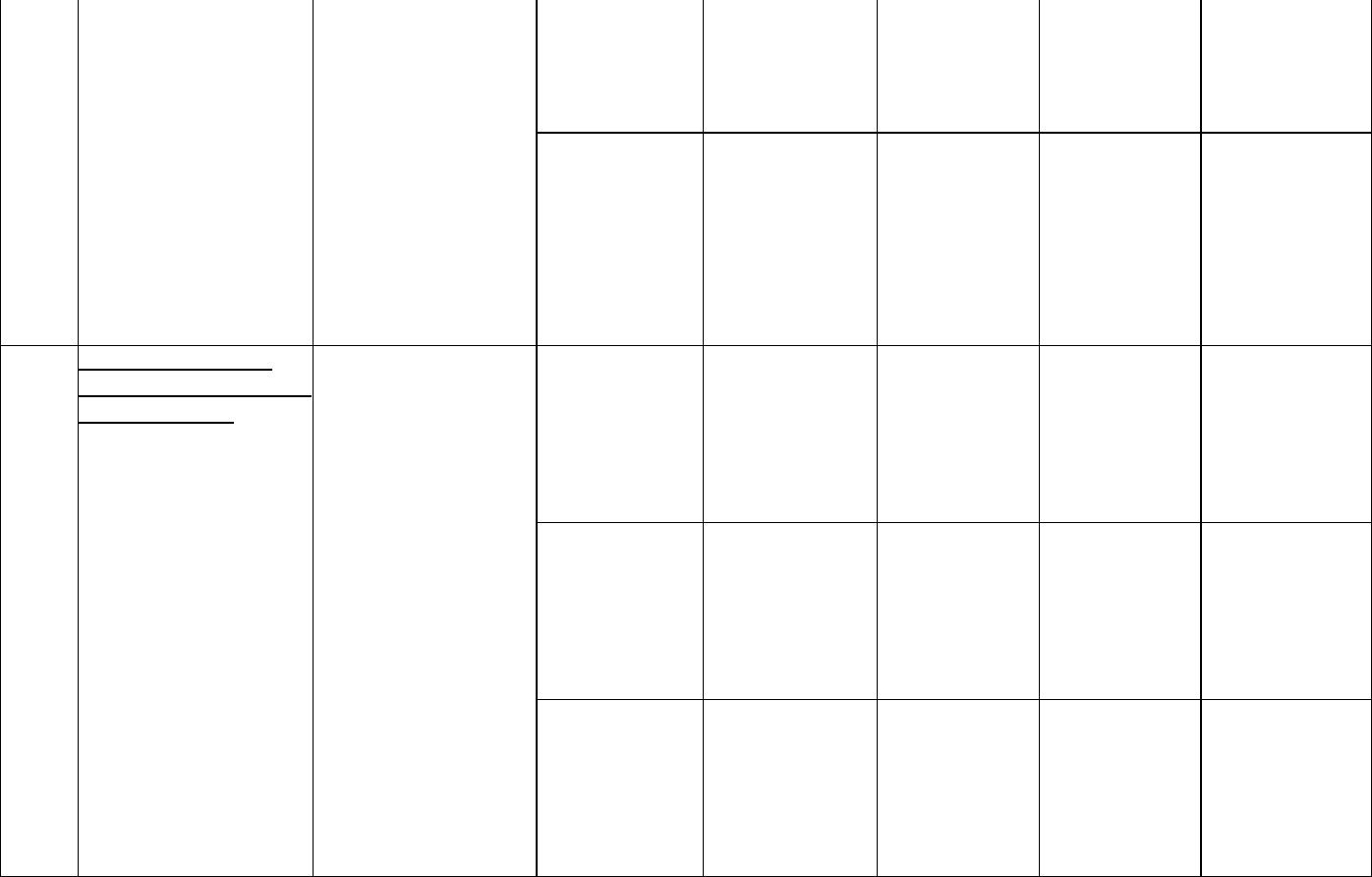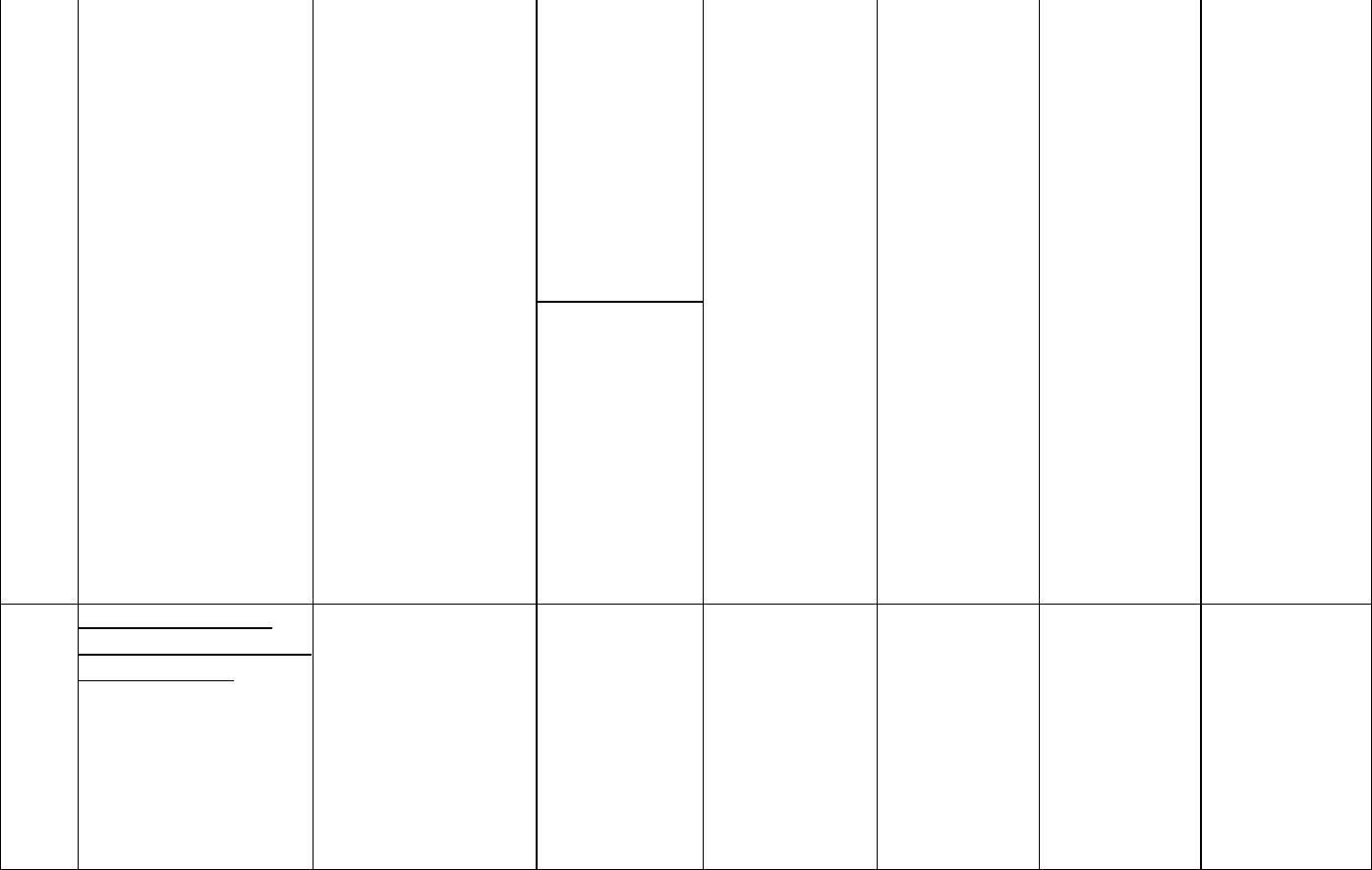
EYFS Writing LTP 2020 - 2021
AIP Link:
We will be successful when opportunities for writing are always available in many forms and for many reasons
There is no gaps between B and G
Environment is to be purposeful and engaging
Writing LTP:
Term 1
Term 2
Term 3
Term 4
Term 5
Term 6
Phonics Phase (See
Phonics LTP)
Phase 2
Phase 2
Phase 3
Phase 3
Phase 4
Phase 3 and Phase 4 used and
applied, including the key and
tricky words (L & S)
Development
matters:
Expected Progress
and Outcomes
(end of the term)
30 – 50
Secure
30 – 50
Secure
40 – 60
Beginning
40 – 60
Consolidating
40 – 60
Secure
Early Learning Goal
Early Adopters:
Writing ELG
Children at the expected level of
development will:
- Write recognisable letters, most
of which are correctly formed;
- Spell words by identifying
sounds in them and representing
the sounds with a letter or letters;
- Write simple phrases and
sentences that can be read by
others. Some words are spelt
correctly and others are
phonetically plausible.
+
Children use their phonic
knowledge to write words in ways
which match their spoken
•Sometimes gives meaning
to marks as they draw and
paint.
•Ascribes meanings to
marks that they see in
different places.
3-4 year-olds will:
Use some of their print and
letter knowledge in their
early writing. For example:
writing a pretend shopping
list that starts at the top of
the page; write ‘m’ for
mummy.
Write some or all of their
name.
Write some letters
accurately.
•Gives meaning to marks they
make as they draw, write and
paint.
•Begins to break the flow of
speech into words.
•Continues a rhyming string.
•Hears and says the initial
sound in words.
•Can segment the sounds in
simple words and blend them
together.
•Links sounds to letters,
naming and sounding the
letters of the alphabet.
•Uses some clearly
identifiable letters
to communicate meaning,
representing some sounds
correctly and in sequence.
•Writes own
name and other
things such as
labels, captions.
•Attempts to
write short
sentences in
meaningful
contexts.
Reception
children will
learn:
Continuing to
form taught
lower-case and
capital letters
correctly.
Reception children
will learn:
Write short sentences
with words with
known sound-letter
correspondences using
a capital letter and full
stop.
This includes writing
with Phase 3 and
Phase 4 used and
applied, including the
key and tricky words
(L & S)

Is beginning to write some
Phase 2 sounds, especially
the beginning sounds of
known words.
Reception children will learn:
Beginning to form taught
lower-case and capital letters
correctly.
Beginning to spell words by
identifying the sounds and
then writing the sound with
letter/s.
Is beginning to write words
by segmenting with familiar
sounds learned so far (Phase
2)
Beginning to spell
words by
identifying the
sounds and then
writing the sound
with letter/s.
Write words by
segmenting with
familiar sounds
learned so far
(Phase 2 and
Phase 3 sounds
taught so far)
Re-read what they
have written to check
that it makes sense.
sounds. This includes writing with
Phase 3 and Phase 4 used and
applied, including the key and
tricky words (L & S)
They also write some irregular
common words. Phase 3 and
Phase 4 key and tricky words (L &
S)
Assessment
Phonics Sounds
covered so far
Yes
Yes
Yes
Yes
Yes
Yes
Reception data
submitted (CLF
Data Drop)
Baseline
Yes
Yes
Yes
Yes
Yes


Termly Overviews
Independent Learning
We will be able to see in
the learning
environment
Adult Lead Learning
We will be able to see
during Adult Lead time
High Quality
Texts
Phonics
Development
matters
AFL
Vocabulary
Term 1
All linked to the class
text:
Giving meaning to marks
Children are beginning to
use phase 2 sounds in
their writing during
Independent Learning
time
Rehearsal of letter
formation – indoor and
outdoor environment
Tapestry Observations of
independent writing
Phonics sessions taught
9 – 9.30 (Letters and
Sounds Phase 2)
Casey the Caterpillar
Letter Formation
sessions during Phonics
Writing focus-
•Sometimes gives
meaning to marks as
they draw and paint.
•Ascribes meanings to
marks that they see in
different places.
Is beginning to write
some Phase 2 sounds,
especially the beginning
sounds of known
words.
Let’s make faces
– Hanoch Piven
Initial sounds –
Phase 2
Can play in a
group, extending
and elaborating
play ideas.
Uses vocabulary
focused on
objects and
people that are
important to
them.
Mark making
Speaking and
listening
Understanding
Face
Eyes
Mouth
Ears
Nose
Smile
teeth
Marvellous me
Initial sounds –
Phase 2
Engages in
imaginative role
play. Uses
available
resources to
create props to
support role play
(Being
imaginative 30 –
50)
Mark making
Speaking and
listening
Understanding
Imagination
Role play
Feelings
Superheroes

Brown bear,
Brown bear what
do you see?
Continue a
rhyming string.
Hears and says the
initial sounds in
words.
Enjoys rhyming
and rhythmic
activities.
Listens to and
joins in with
stories.
Listens to stories
with increasing
attention and
recall.
Mark making
Speaking and
listening
Understanding
Colours
Animals
Cave baby
Giving meanings
to marks they
make as they
draw, write and
paint
Mark making
Speaking and
listening
Understanding
Room on the
broom
Onset and rhyme –
staring to
recognise and
record the
beginning sound
Phase 1
Mark making
Speaking and
listening
Understanding
Term 2
All linked to the class
text:
Continue to give meanings
to marks
Phonics sessions taught
9 – 9.30 (Letters and
Sounds Phase 2
with cvc words and CEW
in simple sentences)
Pattans Pumpkin
Shows care and
concern about
living things and
the
environment.
Size
River
Animals
India

Children are beginning to
use phase 2 sounds in
their writing during
Independent Learning
time, including writing
phrases, labels and some
sentences
Rehearsal of letter
formation – indoor and
outdoor environment
Tapestry Observations -
including writing phrases,
labels and some
sentences (1 observation
per week of independent
writing)
Recorded in books once
a week
Verbal Rehearsal Focus:
Continue with one
quality text per week –
Retelling
In Books:
1 adult lead session per
week:
Sometimes gives
meaning to marks as
they draw and paint.
•Ascribes meanings to
marks that they see in
different places.
Is beginning to write
some Phase 2 sounds,
especially the beginning
sounds of known words
Enjoys playing
with small world
animals.
Gruffalo
Begins to identify
the initial sounds in
words and forms
letters correctly.
Able to continue
a rhyming string:
become familiar
with simple
fiction books they
are able to join in
with.
Role play using
props.
Oral description.
Speaking and
listening.
Recalling a story
Mouse
Stroll
Deep
Dark
Word
House
Tree
Owl
Fox
Snake
Gruffalo
Moon
Able to continue
a rhyming string.
Fox
On Sudden Hill
Mark making
boxes
Role play –
playing with
props and things
they know.
box
Stanley’s Stick

Goldilocks and
the three bears
Traditional
stories.
Term 3
All linked to the class
text:
Children are beginning to
use phase 2 and 3 sounds
in their writing during
Independent Learning
time, including writing
phrases, labels and some
sentences
Rehearsal of letter
formation – indoor and
outdoor environment
Tapestry Observations -
including writing phrases,
labels and some
sentences (1 observation
per week of independent
writing)
Phonics sessions
taught 9:00 –
9:30 (Letters and Sounds
Phase 3 with cvc words
and CEW in simple
sentences)
In Books:
1 adult lead session per
week:
Is beginning to write
words by segmenting
with familiar sounds
learned so far (Phase 2)
Sentence Focus - use
Phase 2 sounds and key
words
Where’s spot?
Each peach pear
plum
Can continue a
rhyming string.
Peach
Pear
Plum
Mother
Cellar
Stairs
Fast
Hill
wood
The Three Little
Pigs
Traditional
stories
House
Brick
Straw
Sticks
Pigs
Wolf
Materials
Oi Frog
Reminder of phase
2 sounds and
applying it to a
context.
Attempts to write
short sentences in
meaningful
contexts.
Cat
Frog
Parrot
Cows
Lions
Irons
Mules
Once upon a
jungle
Beginning to apply
phase 3 sounds
and some CEW
Attempts to write
short sentences in
meaningful
contexts.
Animals
Jungle
Marched
Ants

Preyed
Mantis
Lizard
Monkey
pounced
Little Red Hen
Traditional
stories.
Attempts to write
short sentences in
meaningful
contexts (40 –
60+)
Term 4
Independent learning
session based on the class
text: 9.30 – 10.40
-Role play
-Phonics
-Book making
-Story mountain
-Character exploration
Children are beginning to
use phase 3 sounds in
their writing during
Independent Learning
time, including writing
phrases, labels and some
sentences
Phonics sessions
taught 9 – 9.30 (Letters
and Sounds Phase 3
with cvc words and CEW
in simple sentences)
The very hungry
caterpillar
Phase 3 digraphs
Common exception
words
Trees
Phase 3 digraphs
Common exception
words
We’re going on a
bear hunt
Phase 3 digraphs
Common exception
words

Rehearsal of letter
formation – indoor and
outdoor environment
Tapestry Observations -
including writing phrases,
labels and some
sentences
We’re going on a
picnic
Phase 3 digraphs
Common exception
words
Dinosaurs
Phase 3 digraphs
Common exception
words
Term 5
Independent learning
session based on the class
text: 9.30 – 10.40
-Role play
-Phonics
-Book making
-Story mountain
-Character exploration
Children are continuing to
use phase 3 sounds in
their writing during
independent learning
time, labels and some
Because of an
acorn
Mad
about minibeasts

sentences, labels and
writing phrases.
Children are beginning to
implement key and tricky
words within their group
and independent writing.
Rehearsal of letter
formation – indoor and
outdoor environment
Tapestry Observations -
including writing phrases,
labels and some
sentences
Bee
Supertato
Term 6
Independent learning
session based on the class
text: 9.30 – 10.40
-Role play
-Phonics
-Book making
-Story mountain
- Short stories
- Mini books
Commotion in the
ocean
Sharing a shell
Don’t worry little
crab

- Letters
-Character exploration
Children are using phase
2, 3 and 4 sounds/key
words independently.
They are beginning to
include some phase 5
sounds within their
independent writing.
Children are able to
read their work back to
themselves and to
others.
Dear Zoo
Whatever next
Olivers vegetables
